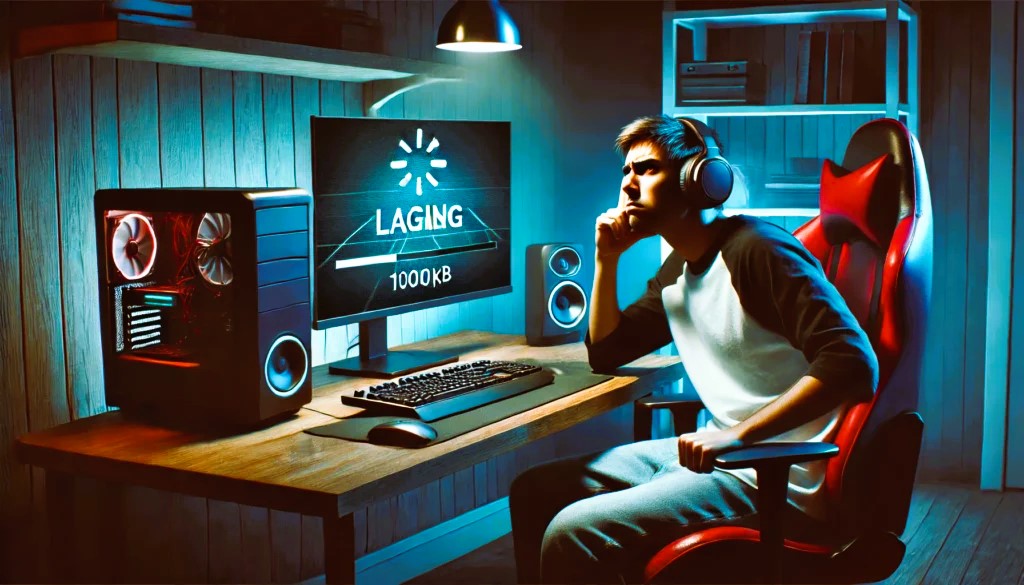In the world of online multiplayer games, buffering and lag can be the difference between victory and defeat. Whether you’re in the heat of a competitive match or immersed in an epic raid, connectivity issues disrupt the flow and ruin the experience. Understanding how to address buffering and lag is essential for every gamer. This guide explores the root causes of these issues and provides actionable solutions to ensure smoother gameplay.
Understanding Buffering and Lag
What is Buffering?
Buffering refers to the delay caused when a system preloads data to ensure smooth playback or operation. In gaming, buffering occurs when the network struggles to keep up with the real-time demands of the game.
What is Lag?
Lag is the delay between a player’s action and the game’s response. It is often caused by high latency or poor network performance. In multiplayer games, lag can manifest as delayed character movement, skipped frames, or even disconnections.
The Impact on Gameplay
Buffering and lag not only hinder performance but also disrupt the immersive experience that gaming offers. They can lead to missed opportunities, errors in judgment, and frustrations among players.
Common Causes of Buffering and Lag

- Insufficient Internet Speed
Online multiplayer games require a stable and fast connection. Insufficient bandwidth leads to delays in sending and receiving game data. - High Latency (Ping)
Latency, measured in milliseconds, determines how quickly data travels between your device and the game server. A high ping means slower responses and lag. - Network Congestion
Using the same network for streaming, downloading, or multiple devices can lead to congestion, impacting gaming performance. - Server Issues
Game servers can experience overloads, maintenance, or outages, causing widespread lag among players. - Hardware Limitations
Older routers, modems, or gaming devices can bottleneck performance, even with a fast internet plan. - Background Applications
Applications running in the background consume bandwidth and processing power, contributing to buffering and lag.
Solutions to Buffering and Lag
1. Optimize Your Internet Connection
- Upgrade Your Plan: Ensure your internet plan meets the speed requirements of your favorite games. For most multiplayer games, a minimum of 25 Mbps is recommended.
- Switch to Wired Ethernet: A wired connection provides more stability and faster speeds compared to Wi-Fi.
- Place Your Router Strategically: Keep your router in a central location, away from physical obstructions.
2. Reduce Latency
- Use Low-Latency Gaming Modes: Many routers have gaming-specific modes or Quality of Service (QoS) settings that prioritize gaming traffic.
- Choose the Right Server: Select a game server closer to your location to minimize latency.
- Run Ping Tests: Use tools to check your ping and identify potential issues. Why Fiber Optic Internet is the Best Choice for Gamers. You will find the answer in our article.
3. Minimize Network Congestion
- Limit Background Usage: Pause downloads and close bandwidth-heavy applications while gaming.
- Set Up Separate Networks: Use a dedicated gaming network to reduce congestion from other devices.
- Schedule Updates: Perform updates during off-peak hours to avoid interruptions during gameplay.
4. Upgrade Your Hardware
- Invest in a High-Performance Router: Modern routers with advanced features like beamforming and dual-band support can improve connectivity.
- Upgrade Your Gaming System: Ensure your PC, console, or device meets the game’s system requirements.
- Replace Outdated Cables: Old or damaged Ethernet cables can limit data transmission speeds.
5. Address Server-Side Issues
- Stay Updated on Server Status: Check server updates and maintenance schedules on official game websites.
- Report Problems: Inform game developers about recurring server issues.
- Consider Regional Servers: Switching to servers with lower player loads can reduce lag.
Advanced Tips for Lag-Free Gaming

1. Use Gaming VPNs
Gaming VPNs optimize routes between your device and game servers, reducing ping and ensuring smoother gameplay. Choose a VPN with low-latency features and servers near your game’s region.
2. Monitor and Manage Bandwidth
Use network monitoring tools to identify devices or applications consuming excessive bandwidth. Adjust their usage or limit their speeds during gaming sessions.
3. Customize In-Game Settings
Lowering graphics settings can reduce the strain on your system and improve overall performance. Options like reduced shadow quality, disabling V-Sync, and lowering texture details can make a noticeable difference.
4. Regularly Update Software
Keep your game, system drivers, and network equipment firmware updated to benefit from the latest performance enhancements and bug fixes.
5. Test Your Connection Frequently
Speed tests help identify inconsistencies in your connection. Tools like the Wateen Speed Test or similar platforms provide insights into download and upload speeds, ping, and jitter.
Buffering and lag in online multiplayer games are common yet solvable challenges. By understanding the causes and implementing the solutions outlined in this guide, you can significantly enhance your gaming experience.
From upgrading your internet connection to optimizing in-game settings, every step helps minimize disruptions and ensures you stay ahead in the competitive world of online gaming. With the right setup and tools, you’ll no longer have to worry about buffering ruining your crucial matches or adventures.
For further resources on gaming standards and optimization, visit Wikipedia.

